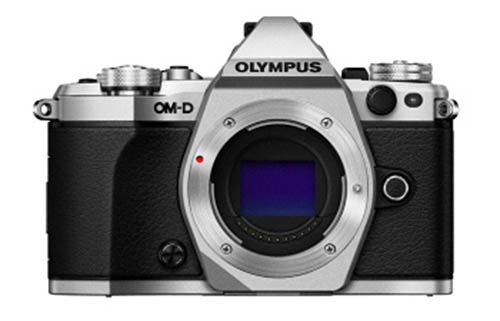Thinking outside the box.

Olympus may have committed one of the larger accounting frauds in recent years, to the tune of over-reporting income by $1.5 billion, but mercifully no such stupidity pollutes their camera design team which has generally been original and stellar in execution for decades. The Pen F brought a high quality half-frame (72 snaps on a roll of 35mm film) body with interchangeable lenses to the film world and the OM1 and successors saw Oly’s jeweled execution conferred on one of the most lovely film SLRs ever made. When they persuaded famous British bird photographer Eric Hosking to dump his heavy Zeiss Contarex gear in favor of their light and capable system, sales took off. No wonder that they have modeled the OM-D MFT DSLR range on the OM1.
When MFT digital came along both Oly and Panasonic were there from inception, rolling out a succeedingly better body seemingly annually. I went with the Panny G1 which was a groundbreaker, sold well before Oly came to market with its first MFT DSLR body. When I recently moved from a G3 to a pair of GX7s the main appeal of Panny over Oly was the availability of the silent electronic shutter in the GX7, a body which finally added IBIS, another first in the Panny line and something Oly had incorporated all along. Now I could get vibe free images at slow shutter speeds using the 17mm and 45mm Oly fixed focal length prime lenses which are excellent quality, fast, faster focusing than anything Panny sells and very compact indeed. The 17mm resides on one GX7, the 45mm on the other, and they are never removed. I also much prefer the unobtrusive ‘Leica M look’ of the GX7 over the OM-D with its intrusive and purposeless hump.
But let’s give credit where it’s due, for Oly has just announced it’s latest MFT DSLR body and it again reminds us that the mental sloths at Canon and Nikon need a good going over with with a cattle prod to wake up, smell the market and come out with FF mirrorless DSLRs in lieu of their antiquated, senseless bouncing mirror/glass prism, noisy monstrosities. Their continued complacency will see someone do this for them (Sony does not count – no credibility, like buying a Hyundai and pretending it’s German), with Fuji rumored to be working on one right now. Before they know it, Canon and Nikon will be yesterday’s news. Kodak anyone?
Imitation may be the sincerest form of flattery, and the sensor shifting HD technology in Oly’s new body is a variation of that used by Hasselblad in its $50k HD50 body which takes multiple images, stitching them together in post, each image seeing the sensor displaced a tad so that the overlaps fix what ails digital sensors – moiré, color issues, grain. Oly does this in the E-M5 II by combining 8 images which can be processed using an included plug-in in Photoshop. True the technology – whether Hasselblad’s or Olympus’s – can only be used with stationary subjects, but check out this fine analysis by Imaging Resource, clicking through to their test chart images, and I think you will be challenged to distinguish the OM-D’s images from those taken using a 36mp Nikon D810. One easy way to spot the Oly images is by the complete absence of moiré effects in the material swatches even though the Oly sensor, like that in the D810, lacks an anti-aliasing filter. Extraordinary. Don’t waste time looking at the Sony images – the model/mount/lens range will be replaced three or more times by Christmas.
The other appealing thing is that finally an OM-D body includes a silent electronic shutter, something I use exclusively on my GX7s where it really is silent and results in far less mechanical wear than is the case with the mechanical one. (If you want a loud and slow focusing 35mm FFE lens, by all means try the execrable 20mm Panny offering – by the time it focuses your subject has crossed the nearest state boundary). The only sound you can hear when the shutter is released is that of the lens focus motor and the motors in the Oly primes I favor will be audible to you only. And by all accounts the multi-axis IBIS in the OM-D bodies is quite a bit better than that in the GX7 (not that I’m complaining) which otherwise resorts to in-lens vibration reduction, meaning Panasonic lenses only. Until the GX7 came along, the Panny user could only get vibration reduction with Panny lenses.
I don’t need the HD function of the new OM-D or any of the dozens of movie modes, but many landscape and architecture snappers will jump at the HD opportunity. Having schlepped their gear miles into the wilderness for yet another mind-numbingly inane image of Half Dome, these erstwhile mavens of the landscape world will welcome the new found lack of bulk and weight as they try yet again to imitate the famously mediocre Saint Ansel when they are not getting off arguing over hardware at LuLa. For snappers needing FF DSLR image quality from an MFT kit, the new OM-D is just the ticket.